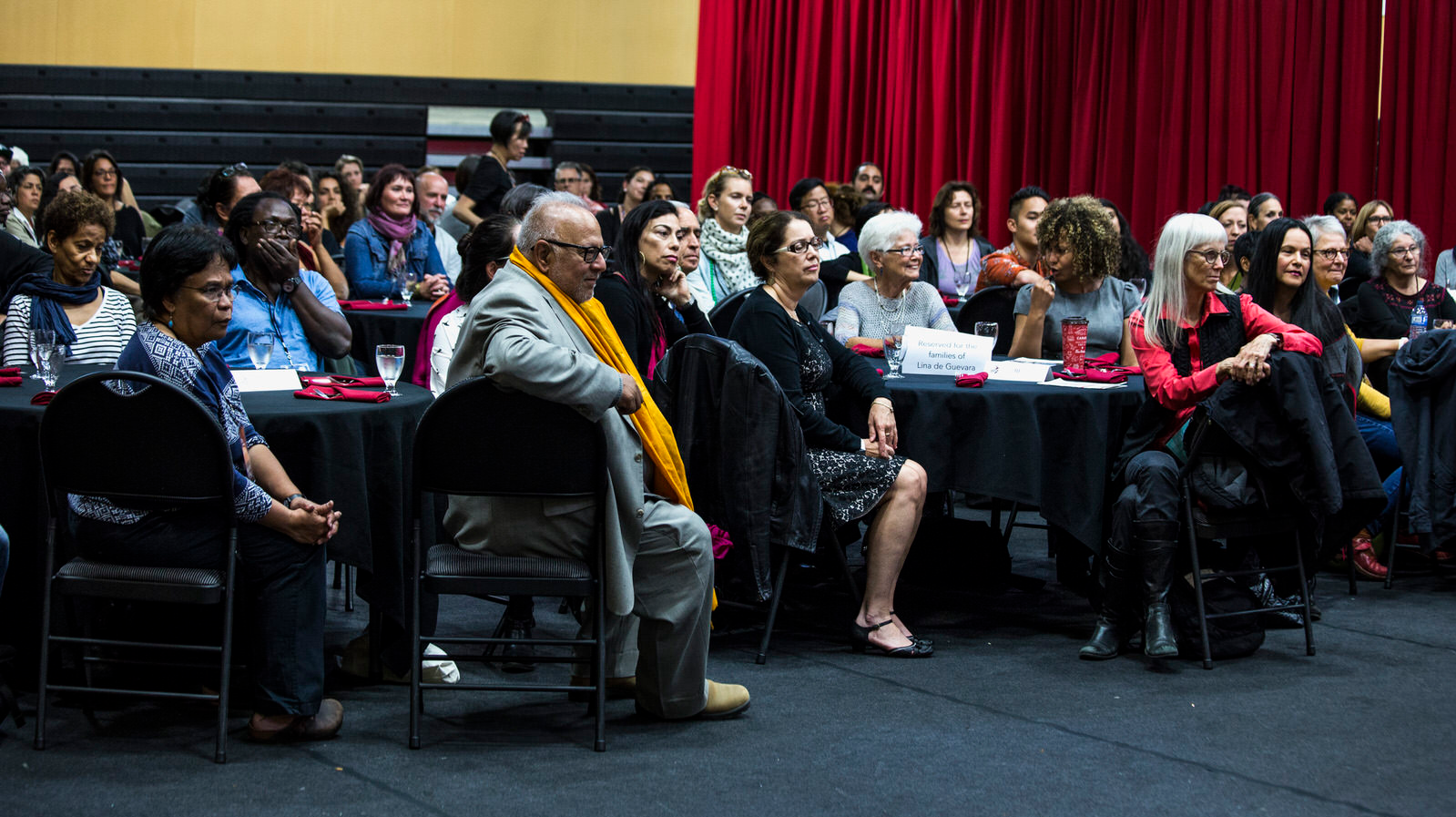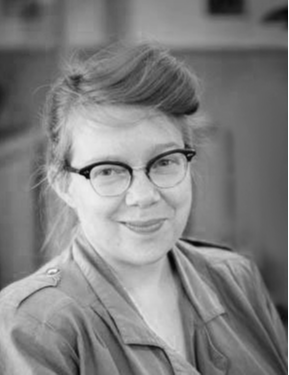 PC/Cp participants and community members at the Community
PC/Cp participants and community members at the Community
Feast on Lekwungen territory honoring Lina de Guevara
and Butch Dick. Photo credit: Kirk Schwartz.
Like most Primary Colours / Couleurs primaires workshops, the title was chosen ahead of time, no questions asked. This was a problem right from the start, because this statement presupposes that the words Acadia and Indigena can be used interchangeably, as though a sort of reciprocity existed between Acadia and the Mi’kma’ki territory.
The Mi’kmaq people enabled us to survive in their forests following the deportation of 1755, but according to information I obtained from Marylin Bear, a Kouchibouguac elder, the help offered by the Mi’kmaq was not out of friendship but rather out of respect for an ancestral value: unconditional compassion for children. Marylin told me that a true friendship between the Mi’kmaq and francophones would have been highly doubtful given the fact that they were betrayed by the first French settlers shortly after their arrival. In order to gain access to marine resources on the west coast of Newfoundland, the French treacherously pitted the Mi’kmaq and Malecites against the Beothuks, which resulted in the latter’s annihilation.
It would be interesting to draw a parallel between the colonial identity and the identity of an uprooted Acadia. But I would hesitate to begin such a conversation without pointing out that we did not share Wabanaki Territory (which includes the Abenaki, Penawapskewi, Pestomuhkati, and Malecite First Nations) in a neutral fashion, as many Acadians would like to believe. This territory had its own name, which we have for too long forgotten. Acadians were long scattered across a diaspora that has come to be known as “l’Acadie sans frontières” (Acadia without Borders). We slowly returned to resettle and create a so-called inclusive society. But until quite recently, we have expressed very little acknowledgement of the compassion shown by the Mi’kmaq people. And although there has been mixing among Acadian and Indigenous families, people are not aware of the circumstances under which this mixing took place. It was against this backdrop of ambiguity concerning identity that I undertook the workshop, which I co-moderated with Stéfan St-Laurent. The subjects discussed included: our hidden Indigenous bloodlines (racism and the stigma attached to the Indigenous ancestry in our white families); bilingualism (and the lack of other non-official languages in our curricula); sharing of territory (and the related power dynamics); and the reality of French-Canadians outside Québec (and their under-representation at PC/Cp).
It became clear for our group that Indigenous languages must be revitalized and included in the public arena, as is being done in Brittany, for example. And while fraternization among francophones, anglophones, and Indigenous peoples is an ongoing process in the Maritime provinces, particularly in light of the collective urgency of opposing fracking and protecting our waterways, it is no longer acceptable to speak of being inclusive without making concrete gestures of reconciliation. There was much talk of the correct process to initiate collaboration. What often came up is that when an invitation is heartfelt, the rest can unfold in an atmosphere of respect and cooperation. I believe it is important not to expect friendship but rather a learning experience. Perhaps, for example, learning another language enough to say hello and to listen, or even to translate. One proposal I find interesting would be to restore the identity of the territory by using pre-contact place names. Accordingly, a more accurate title to summarize our discussion would have been Acadia: Wabanaki.
Translated by Don Sugden, reviewed by Breanna Fabbro.

Based in Moncton and Montreal, Maryse Arseneault is a multi-disciplinary artist whose work has been presented nationally and internationally, through festivals and artist-run centres such as Atelier d’estampe Imago, Eastern Edge, Connexion ARC, and Galerie du Nouvel Ontario. Recent MFA graduate (Concordia University 2015), Arseneault continues to showcase drawing, print and video in her interventions. Her recent efforts critique society's disconnect with nature, due to technology and the objectification of matter through art.